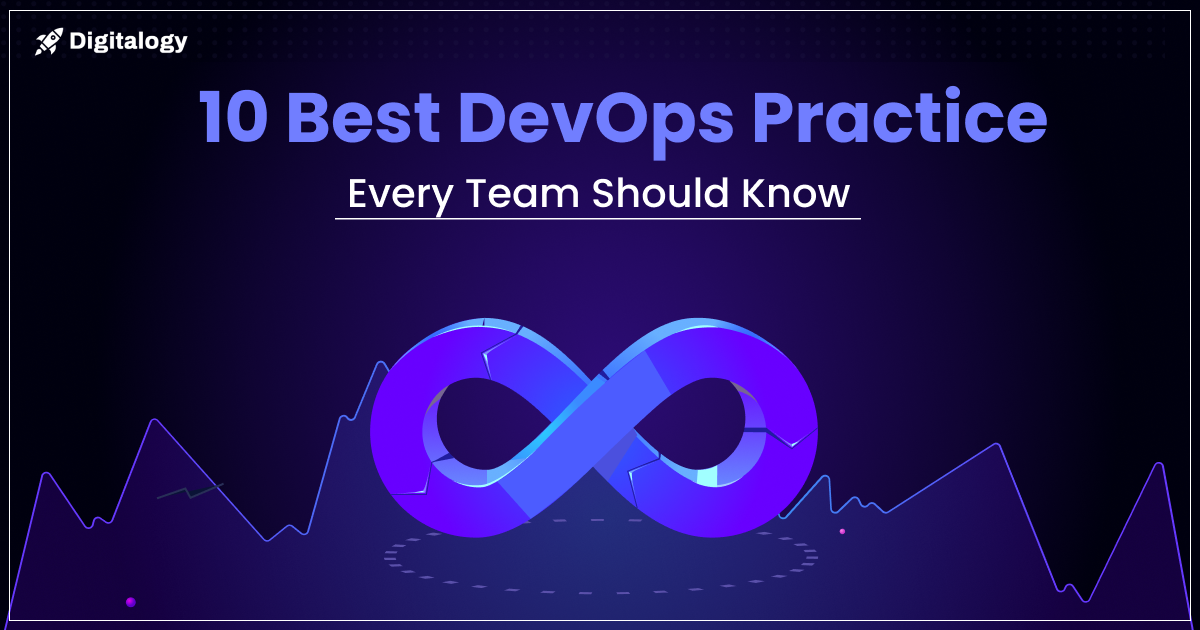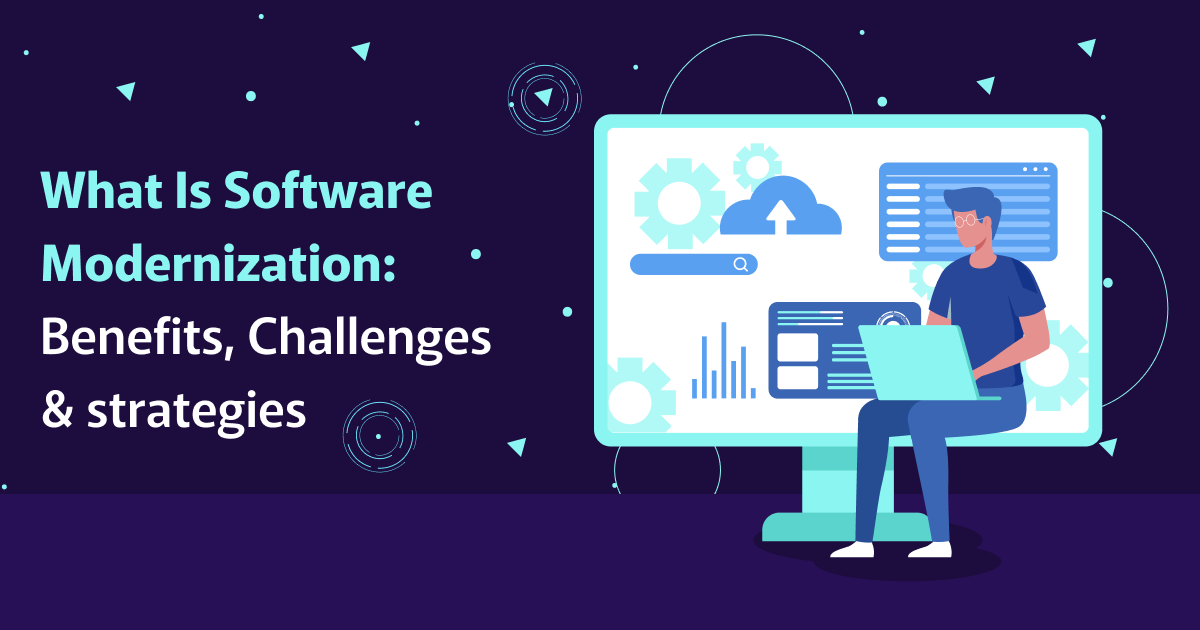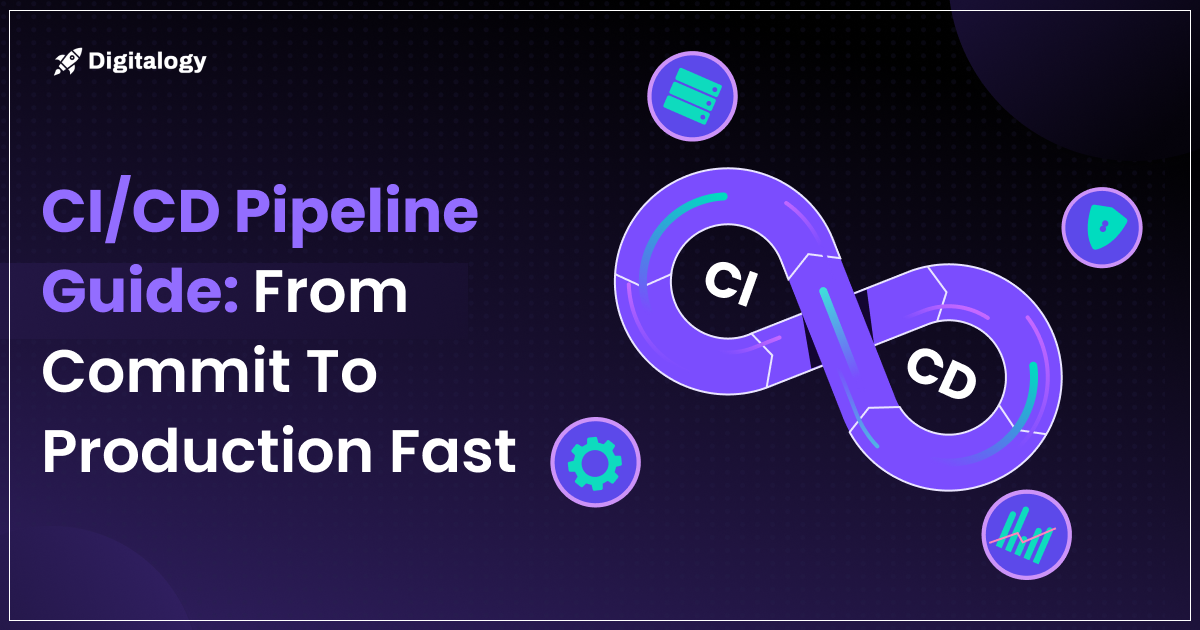The DevOps paradigm has moved from scalable walls between development and operations to highly integrated and collaborative workflows. Aligning developers, operations, QA, and business, DevOps delivers faster time to market, higher quality, and more scalable applications.
Adopting DevOps best practices plays an important role in developing applications that are resilient, secure, and efficient, particularly in the risk-laden domains for applications, such as custom app development, AI solutions, and mobile app development. It means faster releases, fewer bugs and stronger team collaboration. Whether you’re building something new or scaling an existing system, these principles are the foundation for sustainable software delivery.
DevOps Practices to Follow During Development
Here we’ll dissect the key elements all organisations should apply to shorten the process, accelerate output and drive quality. Read below, we break down the fundamental principles you’ll want to follow as a team to improve your workflows, drive efficiency across the board, and deliver the goods.

1. Develop a Strong DevOps Culture
DevOps is a culture shift that emphasises collaboration and transparency between people from different domains and a diverse set of responsibilities involved in delivering software. A strong DevOps culture eliminates silos as we understand them, mandating that the shared accountability is developed between developers, operations, QA, and even the business.
This cultural change starts at the top. Leaders need to lead, they need to educate, train and empower with tools that promote and support a DevOps mindset. Companies should take failure as a learning opportunity, and everyone feels responsible for owning the product. A foundation like this is a necessity when you want to grow in agile, disruptive settings such as startups and corporations looking to hire dedicated developers for scaling.
Quick Takeaways:
- Establish trust and empathy between cross-functional teams.
- Promote regular feedback loops and continual learning.
- Recognise small wins to solidify collaborative behaviour.
2. Implement Version Control Everywhere
Version control is mostly used for source code, but its importance goes beyond source control as well. This practice makes your infrastructure, configurations, scripts, and documentation consistent, traceable, and cooperative across the development lifecycle.
By using tools such as Git, Bitbucket, or GitLab, teams are able to keep track of changes, preserve history and collaborate on code or infrastructure changes in a managed and auditable fashion. This is very convenient when it comes to rollbacks or when you need to train your team to take ownership of the project, thanks to full visibility of who changed what and why. Version control is the source of truth and a key piece to remaining operationally resilient.
Key Points to Remember:
- Be sure to version your configs files, and your environment variables.
- Leverage branches to segment features and bug fixes.
- Brainstorm and promote pull requests for shared code review and knowledge sharing.
3. Automate Everything Possible
Manual processes are error-prone; they can slow down the velocity and quality in delivering software. The role of automation in DevOps is key to mitigating these risks and facilitating consistency, repeatability, and scalability.
Begin by incorporating automated CI/CD pipelines, including Continuous Integration/Continuous Deployment (CI/CD) with tools such as Jenkins, GitHub Actions, or GitLab CI. They automate the process of building, testing, and deploying applications in different environments. Use of automation not only applies to testing, but also for provisioning of infrastructure, management of configuration and doing security scans (using tools like Terraform, Ansible or Puppet). For companies pushing the envelope when it comes to building AI apps, automation provides consistent training and deployment of all those models, with engineers more focused on innovating and spending less time on manually deploying.
Helpful Tips:
- Begin by automating low-hanging fruit, repetitive tasks, to get quick wins.
- Always perform your scripts in test before rolling them out to production.
- Combine automation with monitoring to detect failures quickly.
4. Monitor Continuously
Performance, security, and user satisfaction in any application need to be maintained with continuous monitoring. Monitoring is what ensures you are proactive about knowing when there are problems, understanding where performance is lacking and making decisions based on facts, with current live data.
With the help of DevOps monitoring tools like Prometheus, Grafana, Datadog, and New Relic, you can track system health, server metrics, application logs, and user behaviour. Metrics to monitor are CPU, memory usage, latency, availability, error rate and traffic levels. Create alerts for anomalies to respond to incidents quicker and have less downtime.
Monitoring Best Practices:
- Create dashboards to see the overall health of the system and important metrics.
- Establish threshold-based notifications to track issues faster.
- Watch from the perspective of the actual user (real-user monitoring) for more context.
5. Keep Security “Step One” at Every Step
Security should be a consideration throughout the entire SDLC and should not be treated as an add-on process. This movement is often referred to as DevSecOps and brings security working practices right into DevOps.
Introduce tools for static code scanning, vulnerability scanning and dependency management into your CI/CD pipelines to gain control of the threat surface. Leverage a secret management tool to secure credentials of a sensitive nature. Enforce security and keep track of your access with role-based access controls (RBAC) and audit logs. In addition to this, embedding security early in the development process is a non-negotiable requirement these days.
Security Reminders:
- Try to automate security checks in the CI pipeline.
- Educate developers on highly secure coding practices.
- Update dependencies to avoid known vulnerabilities regularly.
6. Use Agile Project Management
DevOps and Agile are two complementary methodologies. Agile is about developing things iteratively, and DevOps is about making sure the iteration can be delivered swiftly and reliably. This project management software (like Jira Software and Jira Service Desk) is an excellent way to unite the worlds of planning and doing.
Using Jira project management, users can plan sprints, create wishlists for projects, and track everything from bugs or incidents to actions on automatable workflows. These solutions also support distributed teams and bring a level of coherence between what is being developed and the business results. Agile development is indispensable for rapid innovation cycles, when deploying MVPs, or when overseeing any number of custom app development projects.
Pro Tips:
- Keep sprint goals clear and measurable.
- Maintain a well-groomed product backlog.
- Use dashboards to track sprint velocity and throughput.
7. Shift-Left Testing
“Shift-left Testing” is a motto for testing earlier in the development process. The traditional testing methods that are overly reliant on end-of-cycle testing may result in late bug detection and costly rework.
Then, at the top of the pipeline, you can write unit, integration, performance, and sometimes even security tests. Automated testing like this can be performed using tools like Selenium, JUnit, Postman, or JMeter. By putting it in the CI Pipeline, they ensured that all code changes are already tested before they go around the track.
Testing Tips:
- Write test-cases with (or within) user-stories.
- Place a high weight on test coverage for critical areas.
- Do not allow traffic bottlenecks by testing performance during pre-production.
8. Use Infrastructure as Code (IaC)
Infrastructure as code (IaC) is a trending DevOps practice that enables teams to define, create and manage the infrastructure for systems through code, and it’s versionable and maintainable.
You can utilise Terraform, Pulumi, AWS CloudFormation IaC tools to configure servers, databases and network devices using a code-based script. It’s all to cut down on the amount of manual work that we have to do and to speed up deployments.
Why It Works:
- Definitions of infrastructure can be code-inspected.
- Modifications are reversible and auditable.
- Excellent for cloud-native and multi-cloud approaches.
9. Use DevOps Collaboration Tools
Effective collaboration is one characteristic of a successful DevOps team. Without good communication, the best tools and pipelines can result in silos and bottlenecks.
Optimise communication and transfer of knowledge by leveraging DevOps collaboration tools such as Slack, Microsoft Teams, Confluence , etc. Discussions, updates, and documentation are centralised on these platforms.
By connecting these tools to Git repositories, CI/CD tools, and issue trackers, you gain insight and alignment that everyone can get behind. Regular standups, async updates, and shared Dashboards all help to create a transparent development culture here and help in resolving things faster.
Collaboration Hacks:
- Leverage bots and integrations to streamline status updates.
- Maintain up-to-date and accessible documentation.
- Encourage open channels for cross-functional queries.
10. Grow and Learn from the Change
DevOps isn’t a ‘set it and forget it’ system. At its core is continuous improvement, driven by retrospectives, post-mortems, and pipeline performance metrics. All these metrics help teams optimise their development approach and reduce errors.
Measure things like deployment frequency, lead time for changes, and MTTR. Use this information to streamline bottleneck areas and optimise your process. Promote team learning with workshops, certifications, participation at DevOps conferences, or webinars. By embracing feedback loops and riding the wave of developments in technology like GitOps, Kubernetes, or AI-driven testing, you are preparing your DevOps practice for the future.
Improvement Checklist:
- After each sprint, schedule a retrospective.
- Discuss what worked and what not, make strategies accordingly.
- Try out new tools and new ways of working to match the trend.
Case Study – Scaling an AI App with DevOps
A mid-size SaaS company building an AI-driven health tracking app faced challenges in deployment frequency and bug resolution. Their goal was to reduce time-to-market for new features while maintaining a high-quality user experience.
Implementation:
- Set up CI/CD pipelines using Jenkins and Kubernetes for containerised deployments.
- Defined cloud environments using Terraform to ensure parity across development, staging, and production.
- Implemented unit, integration, and performance tests early in the pipeline (shift-left testing).
- Integrated Jira Software to manage feature sprints and bug tracking.
- Adopted Grafana and Prometheus for continuous monitoring of user activity and system health.
Outcome:
- Deployment cycle time dropped from 7 days to under 24 hours.
- 40% reduction in production bugs within two months.
- Enhanced developer experience through better collaboration and visibility.
- Scalability improved, allowing the company to onboard more users without compromising performance.
These results demonstrate how adopting DevOps best practices can yield tangible outcomes in complex environments such as AI app development or mobile app development.
Conclusion
Following these ten best practices for DevOps provides the foundation for building secure, scalable, high-performance applications. These practices, like teamwork between DevOps and developers, automation, built-in security, proper testing, and ongoing feedback, help teams build better software, faster.
Whether you’re starting a small startup or even running enterprise software, you can make DevOps an advantage by taking your business goals and the skill set of your team members into account.







